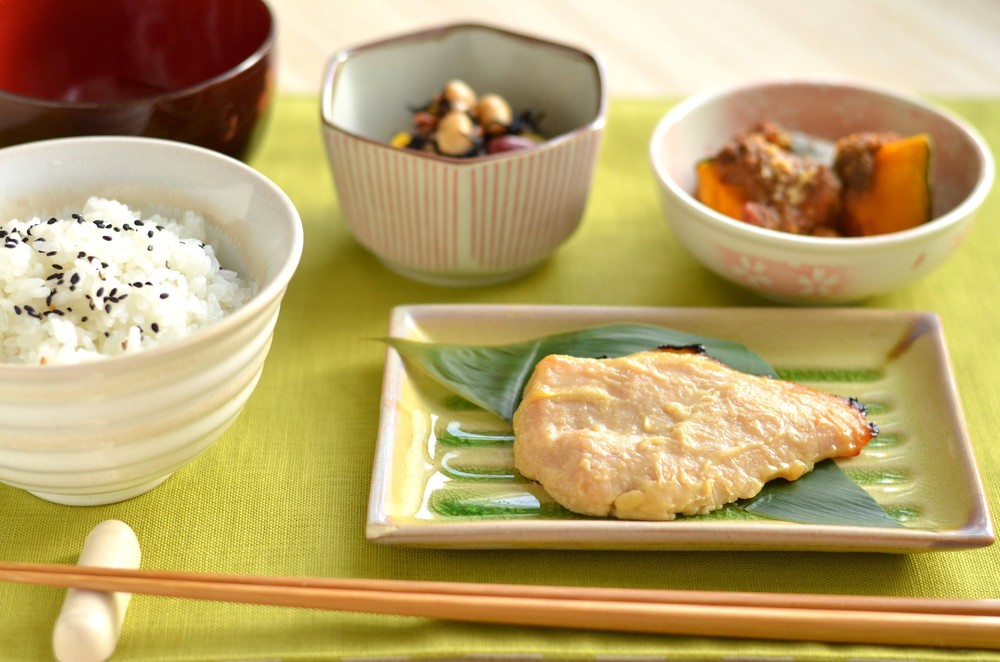
photo by pakutaso.com
Being chosen as a UNESCO world heritage, washoku (Japanese cuisine) has been gathering attention around the world. Coupled with the fact that it is healthy, the number of washoku fans are increasing around the world. Because washoku is a traditional food culture in Japan, there are clear-cut proper table manners that exist. In Japan, it is said that how a person eats defines how that person was brought up. Be sure to check your table manners beforehand so you don’t embarrass yourself at those important times.
Proper washoku table manners
Pre-dining etiquette
- The seat farthest from the entrance is the seat of honor.
- n the case of a Japanese style room, when moving, do not step on the edge or threshold of the tatami mat.
- Do not sit before you are offered a seat.
- Do not step or walk on the cushions.
Chopstick etiquette
- For disposable chopsticks, turn them sideways and break them into two under the table where others cannot see.
- Always put your chopsticks on a chopstick rest, not on top of your plate.
- When there isn’t a chopstick rest available, rest them on the edge of the chopstick wrapper or fold the wrapper to make a chopstick rest.
- Try not to drip sauce from the chopsticks.
- Don’t go digging, in your soup for example, with your chopsticks.
- Don’t hover your chopsticks over the dishes when thinking about what you want.
- Don’t pull your bowl towards you using your chopsticks.
- Don’t stab your food with your chopsticks.
- Don’t point the tip of your chopsticks at people.
Dishware handling etiquette
- For dishware that has a diameter of less than 15cm, hold it in your hands to eat.
- Pull dishware that is closer to your right with your right hand and vice versa.
- Dishware that is picked up should be returned to their original location.
- If dishware with lids are delivered, take all lids off in the beginning.
- When taking the lid off, take care in that the water doesn’t drip, and then flip the lid over and place on the right side of the tray.
- When done eating, put the lids back on.
- Don’t stack the dishware that you are finished with.
- Don’t eat your food by moving your face towards the dishware.
- Don’t touch the rice bowl to your mouth.
Dining etiquette
- Eat starting from things in front of your left hand.
- Don’t ruin the food arrangement.
- Using your hands as a plate is not appropriate.
- For fish, eat the upper portion, remove the backbone, and then continue to eat the meat on the bottom (don’t flip the fish over).
- Eat grilled fish from the left side.
- Don’t mix the horseradish with the soy sauce, but rather put it directly on the sashimi.
- Don’t put chewed up food on your dish.
- Don’t just eat the same things.
- Don’t rest your elbows on the table while eating.
- Don’t speak when there is food in your mouth.
Post-dining etiquette
- Don’t use toothpicks in public.
- Try your best not to get the small damp towel dirty (When wiping your mouth or dirty hands, use a paper napkin).
- Drink your tea when you are done eating.
’Itadakimasu’ and ‘Gochisousamadeshita’
Before a meal Japanese people put their hands together and say ‘itadakimasu’, and when they are done eating they put their hands together again and say ‘gochisousamadeshita’. In Japan, even for children who cannot yet eat their meals properly, these phrases are the first thing they are taught. ‘Itadakimasu‘ is an expression of gratitude for the life of the food. And ‘gochisousamadeshita’ once you are done eating, is an expression of gratitude towards all of the people who put their effort into the meal. There are all kinds of table manners in Japanese style meals, but the most important of all are ‘itadakimasu’ and ‘gochisousamadeshita’. These two phrases are a lovely side of food culture in Japan that makes not only the people who make the food happy, but also the people around them happy as well.
Summary
Like any other country that has table manners, washoku also has proper table manners as well. In more formal Kaiseki cuisine (traditional Japanese course meals), there are even more detailed proper table manners, but here we have introduced the basic ones that are applicable to washoku in general. It might be difficult until you get used to it, but appreciation towards the ingredients, the people who use the ingredients and the people who cook the food, along with the people who are dining with you, are the most important thing. Intentions will be understood. Leave the small details aside, but be sure to not forget to say ‘itadakimasu and ‘gochisousamadeshita’.
Related Article:
Etiquettes when dining in sushi restaurants
